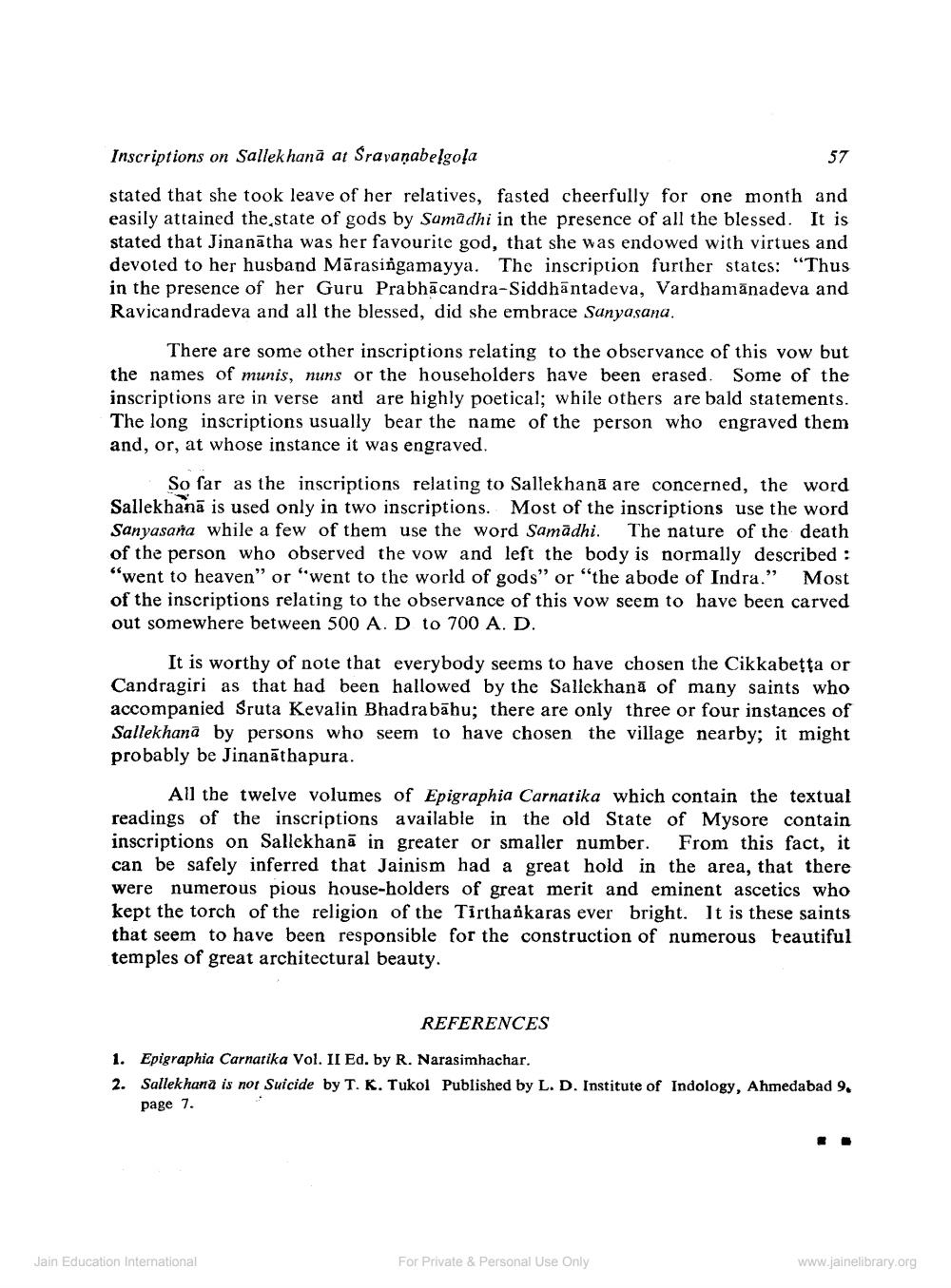________________
Inscriptions on Sallek hana at Sravanabelgola
57
stated that she took leave of her relatives, fasted cheerfully for one month and easily attained the state of gods by Samadhi in the presence of all the blessed. It is stated that Jinanātha was her favourite god, that she was endowed with virtues and devoted to her husband Mārasingamayya. The inscription further states: "Thus in the presence of her Guru Prabhācandra-Siddhāntadeva, Vardhamānadeva and Ravicandradeva and all the blessed, did she embrace Sanyasana.
There are some other inscriptions relating to the observance of this vow but the names of munis, nuns or the householders have been erased. Some of the inscriptions are in verse and are highly poetical; while others are bald statements. The long inscriptions usually bear the name of the person who engraved them and, or, at whose instance it was engraved.
So far as the inscriptions relating to Sallekhanā are concerned, the word Sallekhanā is used only in two inscriptions. Most of the inscriptions use the word Sanyasana while a few of them use the word Samādhi. The nature of the death of the person who observed the vow and left the body is normally described : "went to heaven" or "went to the world of gods" or "the abode of Indra." Most of the inscriptions relating to the observance of this vow seem to have been carved out somewhere between 500 A. D to 700 A. D.
It is worthy of note that everybody seems to have chosen the Cikkabetta or Candragiri as that had been hallowed by the Sallekhana of many saints who accompanied Sruta Kevalin Bhadrabāhu; there are only three or four instances of Sallekhana by persons who seem to have chosen the village nearby; it might probably be Jinanāthapura.
All the twelve volumes of Epigraphia Carnatika which contain the textual readings of the inscriptions available in the old State of Mysore contain inscriptions on Sallekhanā in greater or smaller number. From this fact, it can be safely inferred that Jainism had a great hold in the area, that there were numerous pious house-holders of great merit and eminent ascetics who kept the torch of the religion of the Tirtharkaras ever bright. It is these saints that seem to have been responsible for the construction of numerous beautiful temples of great architectural beauty.
REFERENCES
1. Epigraphia Carnatika Vol. II Ed. by R. Narasimhachar. 2. Sallekhana is not suicide by T. K. Tukol Published by L. D. Institute of Indology, Ahmedabad 9.
page 7.
Jain Education International
For Private & Personal Use Only
www.jainelibrary.org




